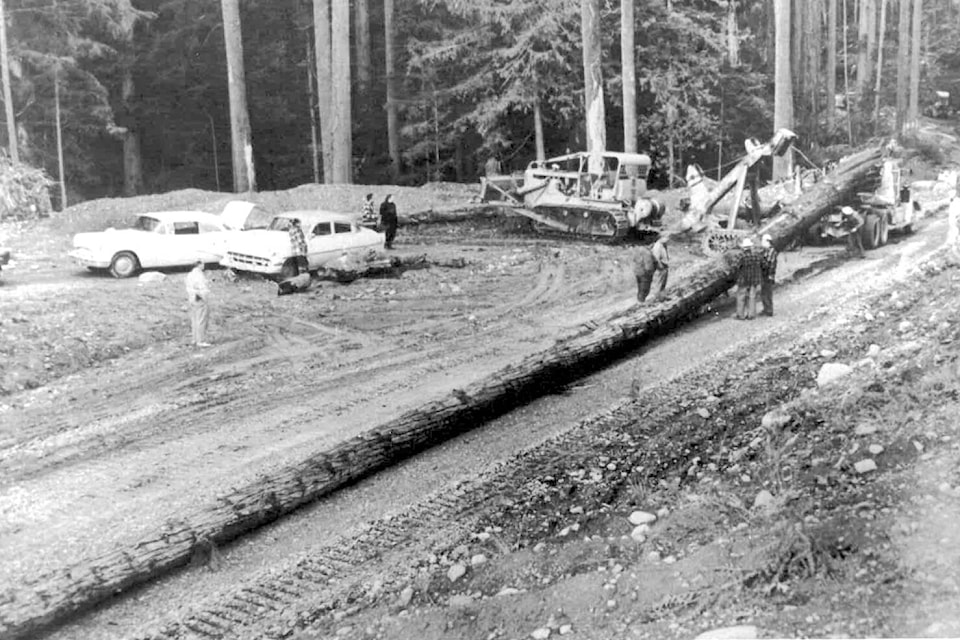Elida Peers | Contributed
A front-page story in the Victoria Times Colonist recently highlighted the 1956 installation of the “story pole” in Beacon Hill Park. The brief account did not say that the pole came from Sooke, but here it is, all 127 feet of it.
Felled deep within the Muir Creek watershed by Ted Shaw, with the assistance of Marshall Smith, this western red cedar was felled onto a bed of boughs which had been prepared to cushion its landing.
It all began when newspaper publisher Stuart Keate decided he wanted to mount the world’s tallest totem in Victoria’s Beacon Hill Park.
Back in the 1950s, Chief Mungo Martin was the most famous of our west coast First Nations carvers. Born in 1879 in Fort Rupert, of Kwakwaka’wakw parents, the chief developed a distinguished reputation, his knowledge and carving skills in high demand.
The chief scouted the Muir Creek woods along with Shaw and a group of experienced loggers and foresters. Felling the forest giant (with a McCullough chainsaw) was one thing, getting it safely to Victoria was quite another.
The log, five feet in diameter at the base and 150 feet long when it was felled, is shown loaded onto one of Elder’s Pacific trucks using a logging arch. The tractor required in the lift was Elder’s D-8 Caterpillar, driven by Joe McNeil. Participants in this historic undertaking also included Max and Jack Elder, Bill Hemmingsen and Ron Walker.
When truck driver Albert King slowly took off to descend to tidewater, the log was rolled into the water off the east bank of Muir Creek. Towlines connected this extraordinary log to an Island Tug and Barge’s vessel that managed to tow it safely to Victoria’s Inner Harbour at the Causeway. Two giant Heaney cranes then maneuvered it to Thunderbird Park, where Mungo Martin, his son David and Henry Hunt would begin work.
The Sooke Region Museum was given this photo courtesy of Victoria Press. Whether the use of “the world’s tallest totem” in the 1950s or “story pole” in today’s idiom, these expressions draw attention to how intercultural outlooks have changed over the years.
•••
Elida Peers is the historian of the Sooke Region Museum. Email historian@sookeregionmuseum.com.
ALSO READ: Sooke’s history alive in historical narrative
editor@sookenewsmirror.com
Like us on Facebook and follow us on Twitter
